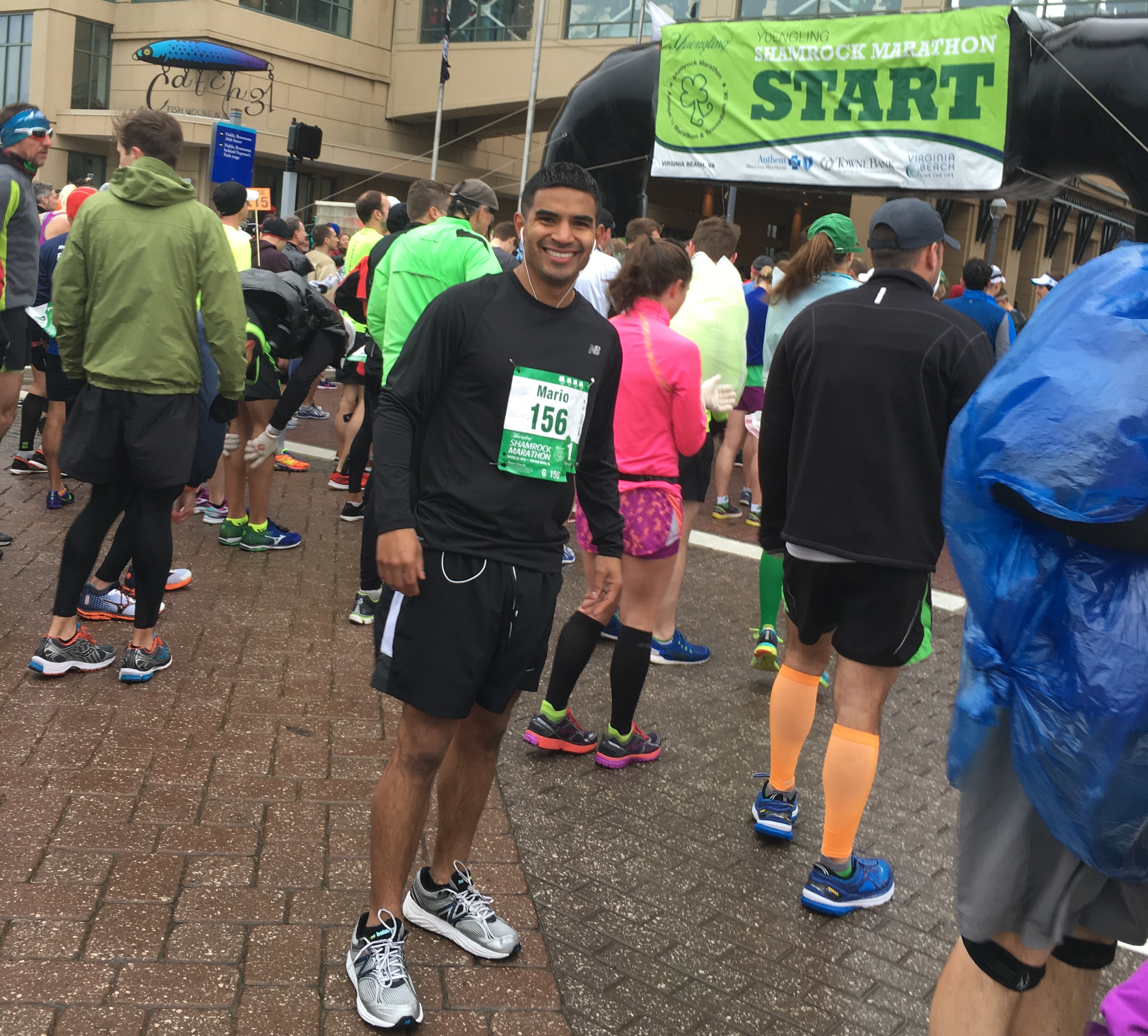This man trained for a sub-3:00 marathon in the most unconventional way
Mario Garcia, a Virginia-based athlete, qualified for the Boston Marathon running sub-3:00 in his first marathon. His training plan will surprise you.


The treadmill is often regarded as a necessary evil for many runners when weather takes a turn for the worse or if nearby running routes are lacking. For Virginia-based Mario Garcia, the treadmill acted as the most ideal way to train for the 42.2K distance culminating in the Shamrock Marathon in the coastal city of Virginia Beach on March 19.
So much so that Garcia, 30, never took a (running) step outside while training for the marathon.
All of his training was done indoors on the belted machine found at most gyms. Not only did he break three hours, he qualified for the most prestigious race of its kind in the world, the Boston Marathon.
Much of Garcia’s neighbourhood includes 70 km/h zones with inadequate infrastructure for running. For him, it’s a debate between running indoors in safe conditions versus battling morning traffic near the American capital. Not a difficult decision for the 30-year-old. He also told Canadian Running that he has trouble controlling his pace on outdoor runs and the treadmill allows for a fixed pace in a controlled environment.
His quest to qualify for the Boston Marathon began in October of this year after running a half-marathon in 1:21. He’s always been a healthy and fit guy. Between the ages of 15 and 28, Garcia had run 7K per day while regularly working out at the gym. During the five-month period that ended in March, the 30-year-old dropped his weight to 145 lbs from 177.
To mimic race day conditions, Garcia did all of his runs in the morning, running approximately 90 minutes per day, a routine he maintained throughout the week. Ninety minutes per day for six days, and 120 minutes on the seventh, equates to approximately 164 kilometres of running per week. That’s more than 100 miles. Every 1.6K, Garcia would switch between running 4:03 and 4:09 minutes per kilometre. An ever-so-subtle fartlek.
Garcia went through plenty of shoes including the below pair of New Balance kicks.
Once a week he would run two hours covering approximately 29K, never leaving the confines of the gym. Rest days were taken as he saw fit though not on a pre-determined schedule and runs were done on a zero to one per cent incline. A one-percent change in incline on the treadmill is roughly equivalent in effort to a 14-second change at Garcia’s pace.
RELATED: Workout Wednesday: A six-week guide to better speed training.
A light weight-lifting session accompanied each treadmill run followed by a recovery meal of Greek yogurt, apples and granola.
While his training leading up to the race may have been unconventional, his race day experience was very much in line with other runners. Wake up three-and-a-half hours before start time, eat two bananas and energy bars, drink two energy drinks (one sugar-free) and lots of water followed by a trip to the bathroom to lighten up. A night-before-the-race dinner of Olive Garden proved to be a source of carbohydrates.
RELATED: Training by time versus distance.
During the race, Garcia didn’t begin to labour until the 30K-mark when his legs began to cramp. Water at each opportunity and Gatorade at every other aid station, the Woodbridge, Va. resident added that keeping a gel for the final 10K helped him to the finish despite his legs feeling like cement.
The gel, and importantly, a quote that a friend had told him months earlier helped him through: “If your legs can’t run anymore, run with your heart.”

Answering to pleas from Internet forum users that he take up a regular training schedule with periodization (hard and easy runs and hard and easy weeks) and tough workouts mixed in, Garcia adds that he will decide whether to train as he has in the past or take on a new approach once he completes the Brooklyn Half in New York City in May.
For now, Garcia, a senior consultant with a focus on financial transformation in technology for a Big Four accounting firm in Washington, D.C., says that “the treadmill will continue being my choice of running and preparation.”
He will be running the NYC race but not for time; Garcia will be alongside his sister in hopes of getting a photo together crossing the finish line.
One glaring omission from his routine is how he keeps sane during 90 minutes of almost-stationary running. Garcia adds that in addition to music, he always brings a small tablet to the gym.
“I enjoy watching YouTube videos of boxing matches and fighters’ training montages,” says Garcia. “Specifically, I like to watch Floyd Mayweather videos, his training and dedication to his sport are second to none. When the Internet is a little off at the gym, I can definitely pass the time on the treadmill watching Friends and Married With Children re-runs. After five-and-a-half months, I think I’ve seen every episode of those two shows.”
Despite training his body to adapt to a specific pace and specific distance by keeping his day-to-day routine the same, Garcia was the top 30-34 male at the Shamrock Marathon and qualified for the 2017 Boston Marathon.
Though more traditional training plans have been the subject of recommendations, Garcia adds that he’s undecided what his plan will be. Perhaps a decision will come after the pain in his marathon legs subside, Garcia jokingly adds. He is not registered for any races beyond May’s half-marathon in the Big Apple.
For more traditional training plans, check out Canadian Running‘s section on the topic.


